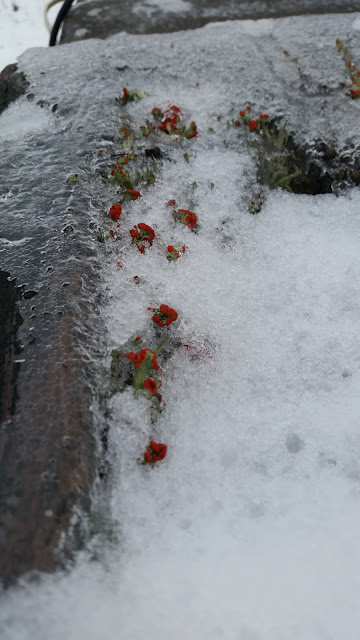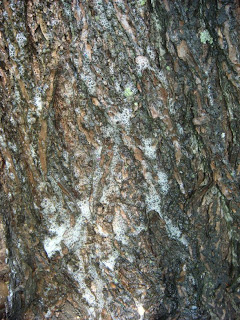Guest Blog: Lichens And Gaining The Edge On Winter Weather
Hardy Vermont State Park fans have been out exploring their
favorite parks, even in the sometimes chilly, sometimes icy winter world we are
experiencing this year. My friend Amy, who loves state parks so much she
completed our Venture Vermont Outdoor Challenge with her little daughter last year, was recently
hiking around in Underhill State Park. Amy came back with wonderful memories of the smell of a
fragrant spruce, fir forest in winter, and a photo of an unidentified lichen
specimen.
To cope with harsh winter weather, and to prevent harmful
freezing, most plants in Vermont lose leaves in autumn, and enter a dormant
period. Deciduous trees, herbaceous plants, wildflowers, and many shrubs spend
the winter leafless, waiting for spring. However, there are some hardy
organisms possessing adaptations giving them the edge on winter weather. The
winter landscape is like a cold desert, freezing temperatures bring an
unavailability of water.
I was running long in Gifford Woods State Park
last week, I forgot my water bottle, but I was able to eat snow off low
hanging, snow laden pine branches. Trees and plants do not have the luxury of
eating snow to get moisture, so they have adaptations to help them handle the
limitations of the winter landscape. Coniferous, needled evergreen trees like
pine and fir, have hard, waxy coatings on their needles, ensuring they do not
lose precious water through their needles. This waxy coating also protects them
from freezing. Ice crystals can destroy plant cells, anyone who has ever had a
too cold refrigerator freeze fresh lettuce leaves knows what I mean.
Lichens are an example of another hardy organism that is
adapted to the harsh winter weather of northern New England. Lichens gain their
ruggedness from the symbiotic relationship combined in this small organism.
Lichens are a single organism are made up of a fungus and some algae in a
mutualistic relationship. Mutualism
means both organisms benefit from the combination. Neither the fungus, nor the
algae could survive harsh winter weather, but together they can thrive and grow
during winter months. The algae provide the form of the lichen, while the algae
provide food and nutrients—through photosynthesis.
Lichens grow very slowly, and often in very inhospitable
environments. I’ve seen lichens grow on tree branches, rocks, and gravestones.
Lichens play important roles as winter food for herbivores, by breaking down
rock into soil, and reducing erosion by growth on new soil. Although very
hardy, growing in places inhospitable to other organisms, lichens are very
sensitive to air pollution. So if you spot lichens, you know you are breathing
clean air, like Amy was the other day in Underhill State Park.
I recognized the lichen Amy found immediately, as British
Soldiers Lichen (Cladonia
cristatella). British Soldiers Lichen identification was one of my earliest nature
lessons from my science teaching father. He used to pick it to bring to my mom
as “flowers,” so I knew how to spot it from an early age. The red you see on
the British Soldiers Lichen is not a flower of course, it is the fruiting body
of the organism, I learned that fact later. Now that you know how to spot this
hardy resident, look for it on your next walk in the Vermont winter woods at
your favorite state park.


.jpg)
.jpg)
Comments
Post a Comment
Feel free to let us know what you think.